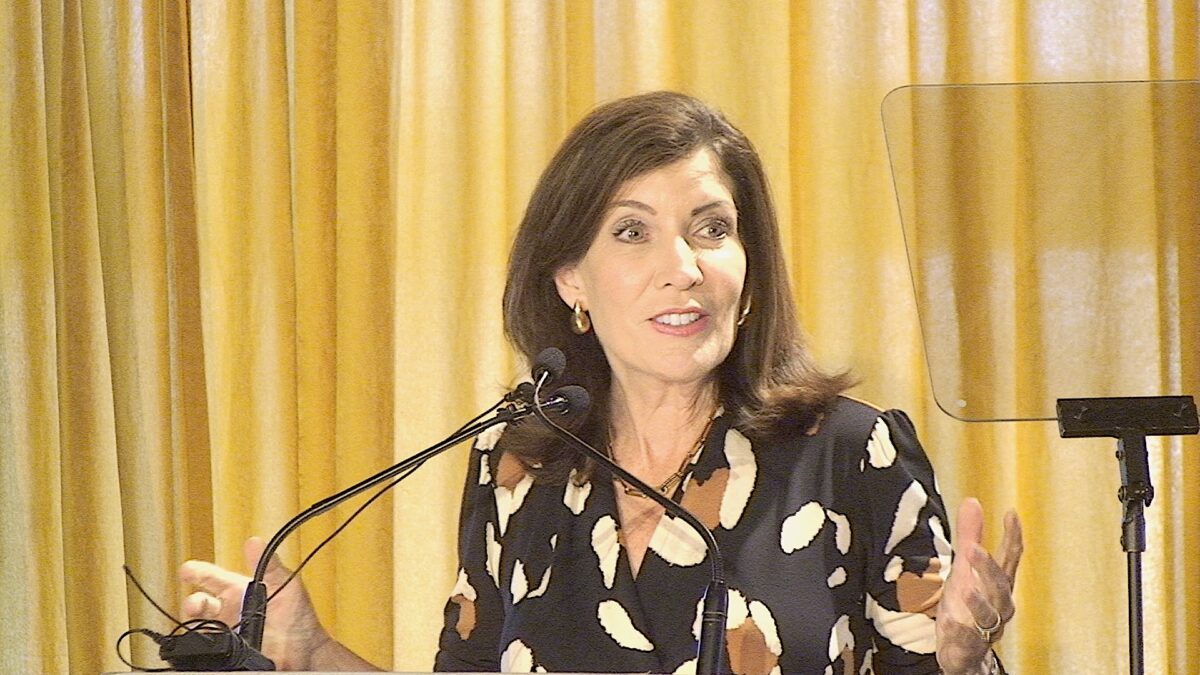As part of a far-reaching effort to improve the quality of services for seniors, New York officials are creating a database to track local aging initiatives with the goal of sharing them with other communities ”“ and possibly at the state level.
While New York has experienced a steady trickle of residents leaving for Sun Belt states, often those individuals return in later years as their health fails for support from their families, according to Michael Burgess, director of the New York State Office of Aging (NYSOFA).
By 2025, the state”™s population of seniors age 60 or more is expected to increase by a whopping 1.4 million people, at which point the age bracket will make up nearly a quarter of the general population.
The new database is being “populated” as part of a broader “Empowering Communities for Successful Aging” drive spearheaded by NYSOFA and comes a year after the agency hosted a conference in Saratoga Springs to reenergize state and local services for the elderly.
“In the year since that time, there have been so many things going on around the state which prove that communities and active people are interested in coming together and helping each other ”¦ some of it even on a neighborhood basis,” Burgess said. “The energy of this is coming from the local level, the wisdom of it is coming from the local level.”
That includes Rockland County, which hosed a “Community Visioning Forum” last May in Orangeburg at which more than 70 leaders met to create a plan for “livable communities.”
Those efforts continued in Tarrytown last month at a conference called “Livable Communities: a Vision for All Ages,” hosted by the Westchester County Department of Senior Programs and Services and the Westchester Public-Private Partnership for Aging. The conferences”™ goals are to help municipalities plan neighborhoods and services so that they are desirable places to live for citizens throughout their lifetime, the preference of 90 percent of older adults recently polled by AARP.
Â
“It is not actually the state that runs this,” Burgess said. “It is really the communities, in your own communities, where you are taking the lead in designing how to address the growing number of older people.”
Â
Burgess expressed amazement at the amount of information that has been shared in the past year between neighborhoods, municipalities and the state, both through formal conferences and conference calls, as well as through informal channels.
“In Orange County and in Dutchess County, they were talking about how they went to the town board ”¦ to get them to pay attention to local issues,” he said.
Burgess does not discount the key role the state and federal governments can play in terms of support, both organizational and financial. This past summer, the state awarded more than $400,000 to 15 communities across the state (about 70 applied for funding) to launch or further efforts to create “aging-friendly” neighborhoods. And New York received funding this year under the federal “Money Follows the Person” program that attempts to improve services for seniors in an effort to keep them in their homes.
Money is obviously harder to track down these days, according to Greg Olsen, deputy director of NYSOFA, who testified last month in Albany on the precarious financial footing aging agencies face in the recession.
“Over the past decade, federal Older Americans Act appropriations to New York state have increased by only $5 million, while over the same period New York state increased its own commitment by $44 million,” Olsen said. “Local governments have also contributed above and beyond what they are required to in order to serve those older adults most in need. Statewide, (area agencies on aging) report over $32 million in program support above their required match for state and federal programs.”
Â
Olsen said that ideas are being shared not just within New York”™s borders, but also with other states. For instance, several communities in New York and Boston are attempting to replicate the Beacon Hill Village model, founded in 2001 by Boston residents to coordinate the provision of services for people at least 50 years old as an alternative to moving from their houses to retirement homes or assisted-living communities.
Â
In the lower Hudson Valley, Gramatan Village in Bronxville and Hudson Valley Home Matters in Poughkeepsie are working toward a similar goal, as are At Home in Greenwich and Staying Put in New Canaan across the Connecticut border.
At the Tarrytown conference, Mae Carpenter similarly ascribed a “village approach” to the livable communities efforts of the Department of Senior Programs and Services of which she is commissioner.
Burgess has been urging state and local officials to revisit senior centers to get an up-to-date view of where things stand today.
At an Albany conference last month, an Ardsley resident who did not identify himself by name could only chuckle at a surreal scene he witnessed and used it as an example of how some centers did not truly achieve a quality of life that could otherwise be obtained in a regular community.
“In one senior center in Dobbs Ferry ”¦ the women and the men were separated,” he said. “I don”™t know what they were afraid of, but not only were they not together ”¦ but they were on opposite sides of the room to make sure there was no contamination.”


















